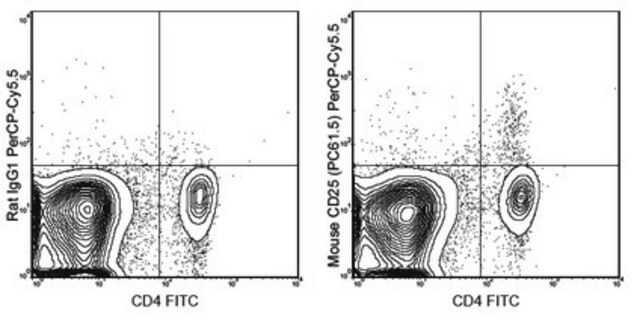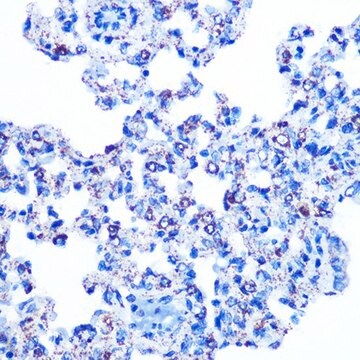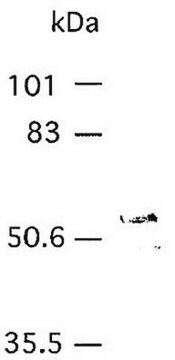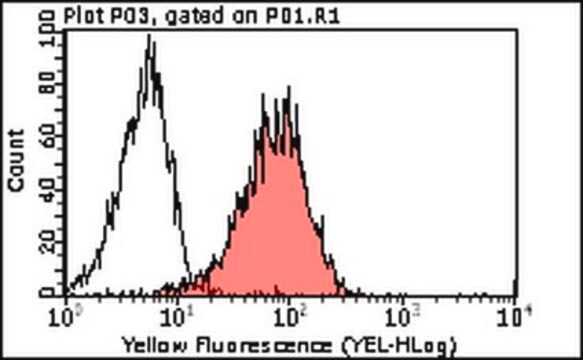MAB3369
Anti-MMP-3 Antibody, clone SL-1 IID4
clone SL-1 IID4, Chemicon®, from mouse
Sinónimos:
Stromelysin-1, Transin, Proteoglycanase
About This Item
Productos recomendados
biological source
mouse
Quality Level
antibody form
purified antibody
antibody product type
primary antibodies
clone
SL-1 IID4, monoclonal
species reactivity
human
manufacturer/tradename
Chemicon®
technique(s)
ELISA: suitable
immunohistochemistry: suitable (paraffin)
immunoprecipitation (IP): suitable
western blot: suitable
isotype
IgG2b
NCBI accession no.
UniProt accession no.
shipped in
wet ice
target post-translational modification
unmodified
Gene Information
human ... MMP3(4314)
General description
Specificity
CELLULAR LOCALIZATION:
Cytoplasmic
Immunogen
Application
Immunoprecipitation (Use Protein A): 2μg/ml protein lysate.
Western blotting: 0.5-1.0 μg/ml for 2hrs at RT
Immunohistology (frozen & formalin-fixed): 10-20 μg/ml for 60 minute at room temperature. No special pretreatment is required for staining of formalin-fixed, paraffin-embedded tissue sections.
Optimal working dilutions and protocols must be determined by end user.
Cell Structure
MMPs & TIMPs
Physical form
Storage and Stability
Analysis Note
POSTIVE CONTROL:
Human endometrium cells, placenta, bladder, breast, ovarian carcinomas.
Other Notes
Legal Information
Disclaimer
¿No encuentra el producto adecuado?
Pruebe nuestro Herramienta de selección de productos.
Storage Class
12 - Non Combustible Liquids
wgk_germany
WGK 2
flash_point_f
Not applicable
flash_point_c
Not applicable
Certificados de análisis (COA)
Busque Certificados de análisis (COA) introduciendo el número de lote del producto. Los números de lote se encuentran en la etiqueta del producto después de las palabras «Lot» o «Batch»
¿Ya tiene este producto?
Encuentre la documentación para los productos que ha comprado recientemente en la Biblioteca de documentos.
Nuestro equipo de científicos tiene experiencia en todas las áreas de investigación: Ciencias de la vida, Ciencia de los materiales, Síntesis química, Cromatografía, Analítica y muchas otras.
Póngase en contacto con el Servicio técnico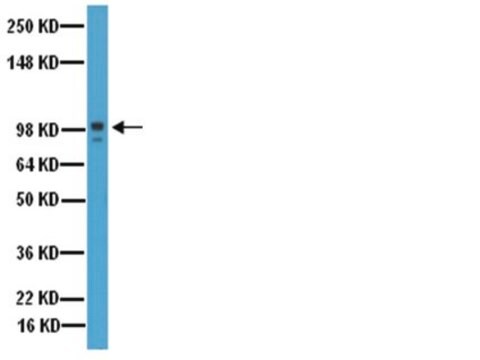
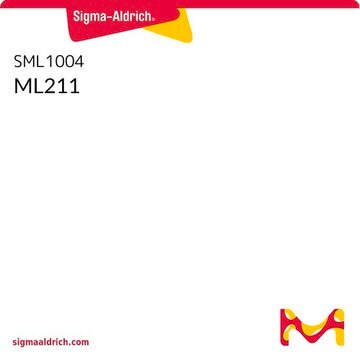
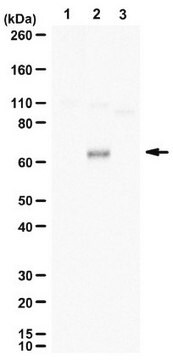

![Anti-EMMPRIN [CD147] Antibody, clone 1S9-2A clone 1S9-2A, from mouse](/deepweb/assets/sigmaaldrich/product/images/305/302/1f047251-6e8a-4007-94ef-f9f7b3e254d5/640/1f047251-6e8a-4007-94ef-f9f7b3e254d5.jpg)

